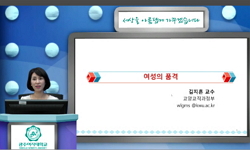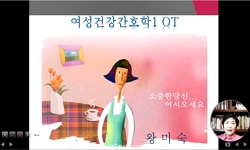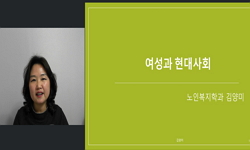Shakespeare depicts various woman characters in his dramas. The characters reflect the magical women Shakespeare forges over through his comedies and tragedies as a blacksmith does to refashion a thing. Miranda is the last woman character Shakespeare ...
http://chineseinput.net/에서 pinyin(병음)방식으로 중국어를 변환할 수 있습니다.
변환된 중국어를 복사하여 사용하시면 됩니다.
- 中文 을 입력하시려면 zhongwen을 입력하시고 space를누르시면됩니다.
- 北京 을 입력하시려면 beijing을 입력하시고 space를 누르시면 됩니다.
https://www.riss.kr/link?id=A82414947
- 저자
- 발행기관
- 학술지명
- 권호사항
-
발행연도
2002
-
작성언어
Korean
- 주제어
-
등재정보
KCI등재후보
-
자료형태
학술저널
- 발행기관 URL
-
수록면
135-155(21쪽)
-
KCI 피인용횟수
1
- 제공처
- 소장기관
-
0
상세조회 -
0
다운로드
부가정보
다국어 초록 (Multilingual Abstract)
For the readers in the beginning of the twenty-first century, the essence of Miranda is that she is an independent and progressive woman who transcends gender, teaches her tutor more than being taught. On the other words, she as a natural woman is a 'tutor' who teaches the intellectuals of the world, just like Prospera who symbolizes the flower of culture. The power Miranda has is not an artificial power like Prospero's which is derived from knowledge and intelligence, but a natural one which grows without any help, which is based on altruism, not on egoism or self-centered. Miranda has Prospero realize what is working on and what he is doing with his magic.
Miranda seems to be an ideal woman in the world where the racial, cultural, religious conflict is surging forth. She is the woman who merges various cultures to 'brave new world' with an outlook on the world, which takes human beings with conflicts to be 'goodly creatures' and 'brave men' rather than excludes them, and the world with conflicts to be 'brave new world'.
Shakespeare depicts various woman characters in his dramas. The characters reflect the magical women Shakespeare forges over through his comedies and tragedies as a blacksmith does to refashion a thing. Miranda is the last woman character Shakespeare reforged in his last sole-authored play, Tempest. She is an embodied human being by Shakespeare's magical pen, rather than a hackneyed woman in the Shakespearean era.
For the readers in the beginning of the twenty-first century, the essence of Miranda is that she is an independent and progressive woman who transcends gender, teaches her tutor more than being taught. On the other words, she as a natural woman is a 'tutor' who teaches the intellectuals of the world, just like Prospera who symbolizes the flower of culture. The power Miranda has is not an artificial power like Prospero's which is derived from knowledge and intelligence, but a natural one which grows without any help, which is based on altruism, not on egoism or self-centered. Miranda has Prospero realize what is working on and what he is doing with his magic.
Miranda seems to be an ideal woman in the world where the racial, cultural, religious conflict is surging forth. She is the woman who merges various cultures to 'brave new world' with an outlook on the world, which takes human beings with conflicts to be 'goodly creatures' and 'brave men' rather than excludes them, and the world with conflicts to be 'brave new world'.
동일학술지(권/호) 다른 논문
-
사회 역사적 문맥에서 본 『한여름 밤의 꿈』에 나타난 사랑과 결혼
- 한국셰익스피어학회
- 황효식(Hyosik Hwang)
- 2002
- KCI등재후보
-
- 한국셰익스피어학회
- 권오숙(Kweon O-sook)
- 2002
- KCI등재후보
-
- 한국셰익스피어학회
- 김미애(Mi-Ae Kim)
- 2002
- KCI등재후보
-
- 한국셰익스피어학회
- 김미예(Miye Kim)
- 2002
- KCI등재후보
분석정보
인용정보 인용지수 설명보기
학술지 이력
| 연월일 | 이력구분 | 이력상세 | 등재구분 |
|---|---|---|---|
| 2027 | 평가예정 | 재인증평가 신청대상 (재인증) | |
| 2021-01-01 | 평가 | 등재학술지 유지 (재인증) |  |
| 2018-01-01 | 평가 | 등재학술지 유지 (등재유지) |  |
| 2015-01-01 | 평가 | 등재학술지 유지 (등재유지) |  |
| 2011-01-01 | 평가 | 등재학술지 유지 (등재유지) |  |
| 2009-01-01 | 평가 | 등재학술지 유지 (등재유지) |  |
| 2007-01-01 | 평가 | 등재학술지 유지 (등재유지) |  |
| 2004-01-01 | 평가 | 등재학술지 선정 (등재후보2차) |  |
| 2003-01-01 | 평가 | 등재후보 1차 PASS (등재후보1차) |  |
| 2002-01-01 | 평가 | 등재후보학술지 유지 (등재후보1차) |  |
| 1999-07-01 | 평가 | 등재후보학술지 선정 (신규평가) |  |
학술지 인용정보
| 기준연도 | WOS-KCI 통합IF(2년) | KCIF(2년) | KCIF(3년) |
|---|---|---|---|
| 2016 | 0.12 | 0.12 | 0.14 |
| KCIF(4년) | KCIF(5년) | 중심성지수(3년) | 즉시성지수 |
| 0.12 | 0.11 | 0.561 | 0.03 |





 KCI
KCI DBpia
DBpia







